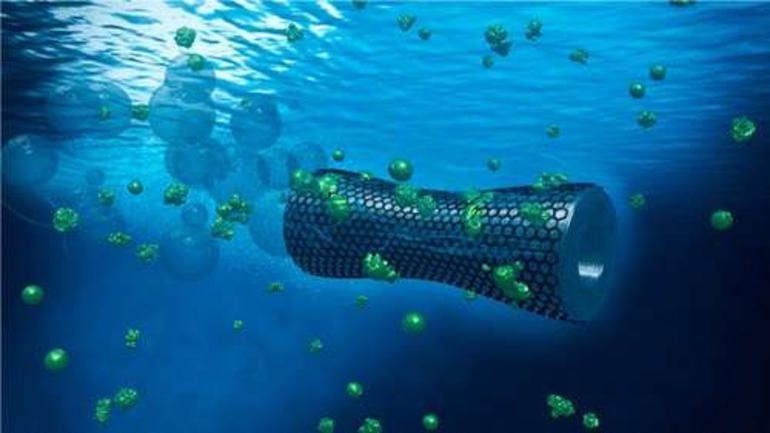Microbots Can Remove Lead from Wastewater
Published on by Water Network Research, Official research team of The Water Network in Technology
Researchers have designed graphene-based microbots, 15–20 microns long, that can reduce lead contamination from wastewater by 95%, promising a novel method for cleaning up industrial pollution.
The international research team led by the Max-Planck Institute for Intelligent Systems (MPI-IS) in Germany, says a swarm of hundreds of thousands of the microbots can clean water containing 1,000 ppb of lead down to below 50 ppb in 60 minutes.
They also say the new proof-of-concept microbots are ten times more efficient than their previous generation of microbots.
 The tube-shaped microbots have three functional layers: The outer layer, made of graphene oxide captures the lead contaminants. The middle layer made of nickel is ferromagnetic, which allows the microbots to be controlled and retrieved using a magnetic field. The inner layer consists of platinum, which breaks down hydrogen peroxide, which is added to the contaminated water. The produced water and oxygen microbubbles are ejected from the back of the microbot, thus allowing the microbots to self-propel through the water.
The tube-shaped microbots have three functional layers: The outer layer, made of graphene oxide captures the lead contaminants. The middle layer made of nickel is ferromagnetic, which allows the microbots to be controlled and retrieved using a magnetic field. The inner layer consists of platinum, which breaks down hydrogen peroxide, which is added to the contaminated water. The produced water and oxygen microbubbles are ejected from the back of the microbot, thus allowing the microbots to self-propel through the water.
Once the microbots have reached their absorbing capacity, they are collected and treated with an acidic solution to remove the lead ions. The microbots can be reused after the treatment, and the treated lead in solution can also be recovered and reused. The researchers foresee a future where the swarm of microbots can be controlled by an automated magnetic system.
In a statement given to Phys.org and confirmed in an email exchange with The Chemical Engineer , Samuel Sánchez, research group leader at MPI-IS said: “This work is a step toward the development of a smart remediation system where we can target and remove traces of pollutant without producing an additional contamination.”
The next step for the team involves extending the microbots to capture other contaminants and reducing the fabrication costs in order to mass-produce the thousands of individual robots required for industrial-scale treatment projects.
Heavy metal contamination of water is common from industrial activities. They are toxic to living organisms and the environment. Manufacturing electronics, and the mining and electroplating industries produce hazardous metals such as lead, arsenic, mercury, cadmium, and chromium.
The researchers say the designs of self-propelled robots with multiple functional layers can be carried over to other research areas such as drug delivery and sensing.
Source: The Chemical Engineer
Read More Related Content On This Topic - Click Here
Media
Taxonomy
- Decontamination
- Technology
- Nanotechnology